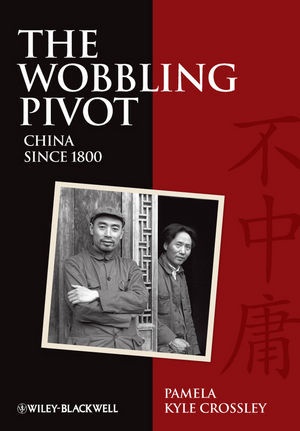En savoir plus
Informationen zum Autor Pamela Kyle Crossley is Professor of Inner Asian, East Asian Intellectual and Chinese History at Dartmouth College, New Hampshire. Her publications include The Manchus (Blackwell, 1997); A Translucent Mirror: History and Identity in Qing Ideology (1999); and What is Global History? (2008). She is a past Guggenheim Fellow and was awarded the Levenson Prize from the Association for Asian Studies in 2001. Klappentext This comprehensive but concise narrative of China since the eighteenth century builds its story around the delicate relationship between central government and local communities.With a nod to Ezra Pound's translation of the Chinese classic Zhongyong - The Unwobbling Pivot, Pamela Kyle Crossley argues that China's modern history has not wholly adhered to the ideal of the 'unwobbling pivot', with China as a harmonious society based on principles of stability. Instead she argues that developments can be explained through China's surprising swings between centralization and decentralization, between local initiative and central authoritarianism. The author's approach is broad enough to provide a full introduction to modern Chinese history. Students new to the subject will be supported with timelines, maps, illustrations, and extensive notes to further readings, while those with a background in Chinese history will find an underlying theme in the narrative addressing long-standing interpretive issues.As a personal perspective from a leading authority in the field, The Wobbling Pivot provides a stimulating and original interpretation of the course of modern Chinese history. Zusammenfassung This comprehensive but concise narrative of China since the eighteenth century builds its story around the delicate relationship between central government and local communities. Inhaltsverzeichnis List of IllustrationsList of MapsForwardPreludeTimelineChapter 1: The Wobbling PivotChapter 2: Sources of Order under the Qing EmpireChapter 3: Sources of Disorder under the Qing EmpireFeature: Strategic BordersChapter 4: Qing and the WorldFeature: Taiping HeroineChapter 5: VisionariesFeature: Hunan Takes the LeadFeature: WaterChapter 6: Beiyang AscendencyChapter 7: Cultural RevolutionFeature: MineralsChapter 8: WarFeature: Manchus as MinoritiesChapter 9: The Transcendent CenterFeature: Health RisksChapter 10: GravityBibliography...
Table des matières
List of Illustrations
List of Maps
Forward
Prelude
Timeline
Chapter 1: The Wobbling Pivot
Chapter 2: Sources of Order under the Qing Empire
Chapter 3: Sources of Disorder under the Qing Empire
Feature: Strategic Borders
Chapter 4: Qing and the World
Feature: Taiping Heroine
Chapter 5: Visionaries
Feature: Hunan Takes the Lead
Feature: Water
Chapter 6: Beiyang Ascendency
Chapter 7: Cultural Revolution
Feature: Minerals
Chapter 8: War
Feature: Manchus as Minorities
Chapter 9: The Transcendent Center
Feature: Health Risks
Chapter 10: Gravity
Bibliography
Commentaire
"Finding a fresh angle to a familiar story is a challenge, one that this book has dealt with creatively and convincingly." (English Historical Review, 1 June 2014
"As a textbook, The Wobbling Pivot is accessible, complete and readable, and as a synthesis of twentieth century Chinese history, it is both original and provocative, and a valuable introduction to the perennial issues that China poses in the undergraduate classroom." (The China Quarterly, 1 September 2012) "[A] lively survey ... .It sheds considerable light on contemporary Chinese dilemmas." (Shanghaiist, December 2010)

